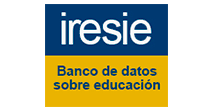O viés americano do método Montessori em São Paulo: Ciridião Buarque e Mary Buarque
DOI:
https://doi.org/10.5216/ia.v43i3.50764Abstract
Montessori constituiu, em 1907, em Roma, uma escola pública para crianças em situação de risco, a Casa dei Bambini, que difundida transnacionalmente configurou práticas e pensamento educacional inovadores. O objeto desta narrativa historiográfica foi estudar a institucionalização do Método Montessori no Brasil, problematizando a sua forma de apropriação e identificando por que o método é relacionado principalmente ao uso de materiais didáticos específicos e de mobiliário adequado ao tamanho das crianças. Foi constatado que a primeira escola montessoriana no Brasil atendeu ao público infantil, em São Paulo, no ano de 1915, num investimento particular de Ciridião Buarque e Mary Buarque. Esta pedagogia se irradiou por intermédio das apropriações realizadas pelos docentes da Escola Normal da Praça, e da legislação que indicava o uso de materiais didáticos de Montessori e de Froebel, mas de forma desarticulada de tais princípios pedagógicos. Evidências da utilização do Método Montessori em perspectiva não restrita ao uso de materiais didáticos foram encontradas nos programas infantis radiofônicos.
Downloads
Downloads
Published
How to Cite
Issue
Section
License
Inter-Ação uses the Creative Commons Attribution 4.0 License for Open Access Journals (Open Archives Initiative - OAI) as the basis for the transfer of rights. Open access means making documents available on the Internet free of charge, so that users can read, download, copy, distribute, print, search, or link to the full text of documents, process them for indexing, use them as input data for software programs, or use them for any other lawful purpose, without financial, legal, or technical barriers.
Authors publishing in this journal agree to the following conditions:
1) Authors retain copyright and grant the journal the right of first publication, with the work simultaneously licensed under the Creative Commons Attribution License, which permits redistribution of the work with attribution and first publication in this journal.
2) Authors are permitted to enter into additional, separate agreements for non-exclusive distribution of the version of the work published in this journal (e.g., for publication in an institutional repository or as a book chapter), with attribution and first publication in this journal.
3) Authors are permitted and encouraged to publish and distribute their work online (e.g. in institutional repositories or on their home page) at any time before or during the editorial process, as this may generate productive changes as well as increase the impact and citation of the published work.















